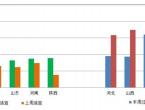Development and Reform Commission: Orderly liberalize on-grid tariffs for all coal-fired power generation
The National Development and Reform Commission issued a notice on further deepening the market-oriented reform of coal-fired power generation on-grid tariffs, requiring the orderly liberalization of the on-grid tariffs for all coal-fired power generation. In principle, all coal-fired power generation will enter the electricity market, and the on-grid electricity price will be formed within the range of "base price + fluctuations" through market transactions. The current benchmark price of coal-fired power generation continues to be the linking benchmark for the formation of new energy power generation prices.
Expand the range of fluctuations in market transaction electricity prices. Expand the fluctuation range of coal-fired power generation market transaction prices from the current float not exceeding 10%, and in principle not exceeding 15%, to expand to not exceeding 20% in principle, and not exceeding 20% in market transaction prices for high energy-consuming enterprises. limit. The spot price of electricity is not limited by the above range.
The full text is as follows:
National Development and Reform Commission on further deepening
Notice of the market-oriented reform of coal-fired power generation on-grid tariffs
Development and Reform Price (2021) No. 1439
Provinces, autonomous regions, municipalities directly under the Central Government and cities under separate state planning, Xinjiang Production and Construction Corps Development and Reform Commission, Huaneng Group, Datang Group, Huadian Group, State Power Investment Corporation, National Energy Group, State Power Corporation, State Grid Corporation of China, China Southern Power Grid Co., Ltd., Inner Mongolia Electric Power (Group) Co., Ltd.:
In order to implement the decisions and deployments of the Party Central Committee and the State Council, accelerate the market-oriented reform of electricity prices, improve the mechanism for determining electricity prices mainly by the market, and ensure the safe and stable supply of electricity, we are hereby notified of the further deepening of the market-oriented reform of on-grid electricity prices for coal-fired power generation and related matters as follows:
One, the overall idea
In accordance with the overall requirements of the power system reform to "control the middle and liberalize the two ends", orderly liberalize the on-grid tariff for all coal-fired power generation, expand the range of fluctuations in market transaction power prices, promote industrial and commercial users to enter the market, cancel the industrial and commercial catalog sales price, and maintain Residents, agriculture, and public welfare undertakings have stable electricity prices, give full play to the decisive role of the market in resource allocation, better play the role of the government, ensure the safe and stable supply of electricity, promote the optimization and upgrading of the industrial structure, promote the construction of a new power system, and help carbon achieve Peak and carbon neutral goals were achieved.
2. Reform content
(1) Orderly liberalize the on-grid tariffs for all coal-fired power generation. In principle, all coal-fired power generation will enter the electricity market, and the on-grid electricity price will be formed within the range of "base price + fluctuations" through market transactions. The current benchmark price of coal-fired power generation continues to be the linking benchmark for the formation of new energy power generation prices.
(2) Expand the range of fluctuations in market transaction electricity prices. Expand the fluctuation range of coal-fired power generation market transaction prices from the current float not exceeding 10%, and in principle not exceeding 15%, to expand to not exceeding 20% in principle, and not exceeding 20% in market transaction prices for high energy-consuming enterprises. limit. The spot price of electricity is not limited by the above range.
(3) Promote all industrial and commercial users to enter the market. All localities should promote all industrial and commercial users to enter the electricity market in an orderly manner, purchase electricity at market prices, and abolish industrial and commercial catalog sales prices. For users who have not yet entered the market, all users with 10 kV and above must enter, and other users must enter as soon as possible. For users who have not directly purchased electricity from the electricity market, the power grid companies will purchase electricity as an agent. The agent purchase price is mainly formed through centralized bidding or competitive bidding. When selling electricity to the agent user for the first time, the user shall be notified at least one month in advance. . For users who have participated in market transactions and changed to power grid companies to purchase electricity on behalf of other users, the price will be 1.5 times the power purchase price of other users on behalf of power grid companies.
Encourage local governments to implement phased preferential policies for small and micro enterprises and individual industrial and commercial households.
(4) Maintain stable electricity prices for residents and agriculture. Residents (including schools, social welfare institutions, community service centers and other public welfare users that implement residential electricity prices), agricultural electricity supply is guaranteed by grid companies, and the current catalog sales electricity price policy is implemented. All localities should give priority to using low-cost power sources to ensure electricity consumption for residents and agriculture.
3. Safeguard Measures
(1) Promote the construction of the power market in an all-round way. Strengthen policy coordination to meet the needs of all industrial and commercial users to enter the power market, and further liberalize various power generation plans; improve the power market system, accelerate the cultivation of qualified power sellers, enrich medium and long-term trading varieties, accelerate the construction of the power spot market, and strengthen the auxiliary service market Construction, exploring the establishment of a market-based capacity compensation mechanism.
(2) Strengthen the connection with the time-of-use electricity price policy. All localities should speed up the implementation of time-of-use electricity price policies, establish a peak electricity price mechanism, and guide users to use electricity at peak shifts, cut peaks and fill valleys. Where the power spot market is not operating, it is necessary to do a good job of linking market transactions with the time-of-use electricity price policy. If the electricity consumption curve is not declared in the market transaction contract and the peak-to-valley ratio of the market electricity price is lower than the local time-of-use electricity price policy, the purchase price at settlement Execute according to the local time-of-use electricity price peak and valley period and floating ratio.
(3) Avoid unreasonable administrative intervention. All localities must strictly follow the relevant national policy requirements to promote the construction of the power market, formulate and continuously improve market transaction rules, and must not set unreasonable thresholds for power users and power generation companies to enter the power market, and must not organize and carry out special power transactions, and the market transaction price is within the specified range Reasonable fluctuations within the market shall not be intervened to ensure fair, just and open market transactions. The National Development and Reform Commission will further strengthen guidance with relevant departments, and promptly urge rectification and reform through interviews, notifications, etc., for local unreasonable administrative interventions.
(4) Strengthen the supervision of the coal power market. Local development and reform departments should pay close attention to coal and power market dynamics and price changes, and actively cooperate with relevant departments to investigate and deal with market players’ price collusion, price drive up, implementation of monopoly agreements, abuse of market dominance, and other activities. Power companies and trading institutions participate in special power transactions. And settlement of electricity bills, as well as local governments' abuse of administrative power to exclude and restrict market competition, and publicly expose typical cases to maintain a good market order. Instruct power generation companies, especially coal and power joint ventures, to make overall consideration of the operating benefits of upstream and downstream businesses, reasonably participate in power market quotations, and promote the formation of reasonable market transaction prices.
Local development and reform departments must fully understand the importance of further deepening the market-oriented reform of coal-fired power generation feed-in tariffs under the current situation, unify thinking, clarify responsibilities, and coordinate with relevant departments and power companies to organize and implement work; strengthen policy publicity and interpretation, and timely Respond to social concerns, enhance understanding and support from all quarters, and ensure that the reforms are smoothly introduced and effective.
This notice will be implemented on October 15, 2021. If the current policy is inconsistent with this notice, the provisions of this notice shall prevail.
National Development and Reform Commission
October 11, 2021











